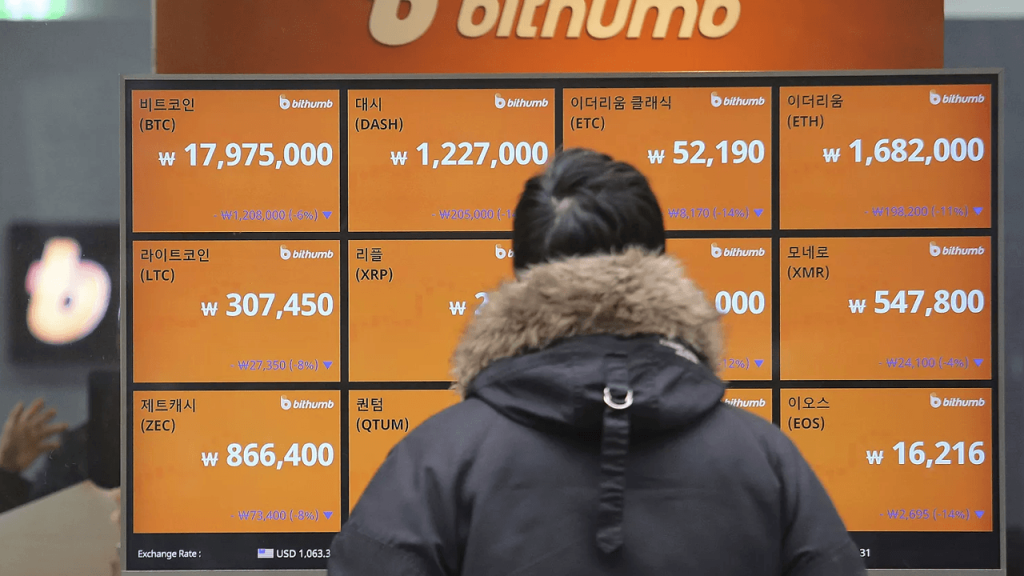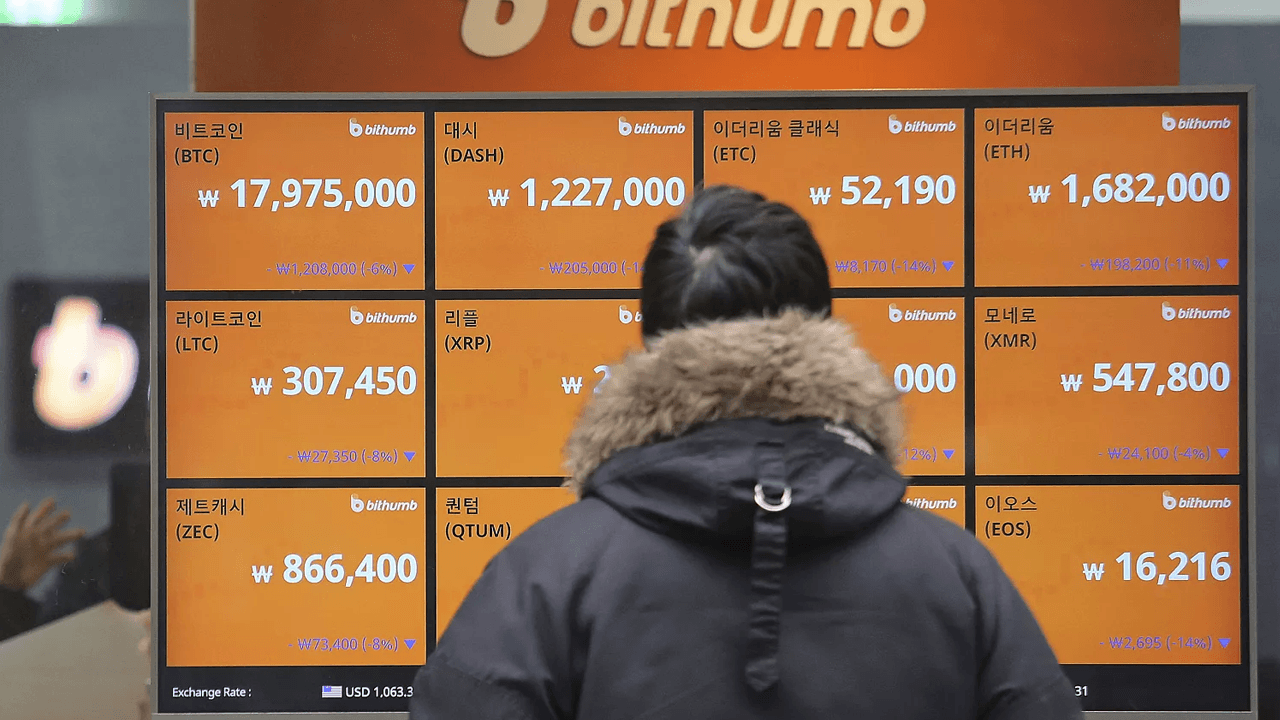
Decoding the Kimchi Premium: A Deep Dive into Bitcoin’s Price Fluctuations in South Korea
Introduction
South Korea’s cryptocurrency market has long been a subject of fascination and intrigue. The country’s unique market dynamics, particularly the “Kimchi Premium,” have set it apart from global trends. However, recent shifts have introduced a new phenomenon—the “Kimchi Discount”—raising questions about the underlying causes and implications of these price fluctuations. This report delves into the historical context, current trends, and future outlook of Bitcoin’s price dynamics in South Korea.
The Rise and Fall of the Kimchi Premium
Historical Context
The Kimchi Premium, a term coined to describe the higher price of Bitcoin and other cryptocurrencies on South Korean exchanges compared to global markets, has been a persistent feature of the country’s crypto landscape. This premium was driven by several factors:
The Allure of Arbitrage
The Kimchi Premium attracted significant attention from arbitrage traders seeking to exploit the price difference. However, the complexities of moving capital in and out of South Korea, coupled with regulatory hurdles, made arbitrage a challenging endeavor. This allowed the Kimchi Premium to persist, sometimes reaching extraordinary levels. For instance, there were instances where Bitcoin traded at a premium of 30% or more on South Korean exchanges like Upbit, Bithumb, and Korbit.
The Shift to a Discount
Recent market trends have painted a different picture, with the emergence of a “Kimchi Discount.” This reversal has prompted a closer examination of the factors driving this change. The shift from a premium to a discount can be attributed to several key factors:
The Emergence of the Kimchi Discount
Regulatory Uncertainty and Market Sentiment
South Korea’s regulatory environment has been a significant factor in the emergence of the Kimchi Discount. Changes in regulations, potential tax implications, and increased scrutiny of crypto exchanges have led to reduced trading activity and lower prices. Market participants are often cautious during periods of regulatory uncertainty, leading to a decrease in demand and a subsequent price drop.
Capital Outflow and Reduced Demand
The easing of capital controls or the availability of new investment opportunities overseas has led to a shift in capital flow dynamics. South Korean investors, seeking to diversify their portfolios or take advantage of better returns elsewhere, have reduced their exposure to domestic crypto markets. This capital outflow has exerted downward pressure on local Bitcoin prices, contributing to the Kimchi Discount.
Macroeconomic Factors
Broader economic conditions in South Korea, such as inflation, interest rates, and economic growth, have also played a role in the emergence of the Kimchi Discount. Economic downturns or periods of uncertainty can lead investors to reduce their exposure to risk assets like Bitcoin. This shift in investor sentiment has resulted in lower prices on South Korean exchanges.
Political Instability
Political turmoil can have a significant impact on financial markets, including the cryptocurrency market. The declaration of martial law in South Korea, for instance, triggered a sharp crash in Bitcoin prices on local exchanges. This event created a substantial arbitrage gap compared to global markets, highlighting the vulnerability of the South Korean crypto market to political instability.
Market Manipulation
While less likely, market manipulation can influence local prices in either direction. The South Korean crypto market, with its relatively smaller size compared to global markets, may be more susceptible to manipulation by large players or coordinated trading activities.
The Impact of Political Turmoil: A Case Study
The impact of political events on Bitcoin’s price in South Korea became strikingly evident recently when emergency martial law caused a sharp crash. Bitcoin’s price plunged dramatically on Upbit, creating a significant arbitrage opportunity. While the price recovered subsequently, the incident underscored the sensitivity of the South Korean crypto market to political instability and sudden policy changes. The crisis led to a liquidity crunch and the disappearance of key market players, exacerbating the price drop. This event served as a stark reminder of the risks associated with investing in cryptocurrencies in politically volatile regions.
Analyzing the Current Market Situation
Recent reports indicate that the Kimchi Discount has been narrowing, suggesting a potential recovery in the South Korean Bitcoin market. Several factors could be driving this trend:
Increased Arbitrage Activity
As the Kimchi Discount becomes more apparent, arbitrage traders may attempt to exploit the price difference by buying Bitcoin in South Korea and selling it on international exchanges. This activity can help to equalize prices and reduce the discount.
Market Correction
The initial sell-off that caused the discount may have been an overreaction to specific events or news. As the market stabilizes and investors regain confidence, prices may gradually recover.
Global Market Trends
The price of Bitcoin in South Korea is also influenced by global market trends. Positive developments in the broader crypto market, such as increased institutional adoption or favorable regulatory news in other countries, can boost sentiment and drive up prices in South Korea as well.
Implications for Investors and Traders
The fluctuations in the Kimchi Premium and the emergence of the Kimchi Discount have significant implications for investors and traders:
Arbitrage Opportunities
The presence of a price gap, whether a premium or a discount, creates arbitrage opportunities. Traders can profit by buying Bitcoin on the exchange where it is cheaper and selling it on the exchange where it is more expensive. However, it’s crucial to consider the transaction costs, regulatory hurdles, and potential delays associated with moving funds between exchanges.
Market Volatility
The South Korean crypto market can be more volatile than other markets due to its sensitivity to local news and events. Investors should be prepared for potential price swings and exercise caution when trading on South Korean exchanges.
Regulatory Risks
Regulatory changes can significantly impact the South Korean crypto market. Investors should stay informed about the latest regulatory developments and understand how they may affect their investments.
Diversification
Diversifying investments across multiple exchanges and asset classes can help mitigate the risks associated with investing in the South Korean crypto market.
Conclusion: Navigating the Korean Crypto Landscape
The Kimchi Premium and its recent shift to a discount highlight the unique dynamics of the South Korean Bitcoin market. While arbitrage opportunities may arise, investors must carefully consider the regulatory environment, market volatility, and political risks. Staying informed, diversifying investments, and exercising caution are essential for navigating this complex and ever-evolving landscape. The future of Bitcoin’s price in South Korea will depend on a combination of local and global factors, making it a fascinating market to watch for both seasoned traders and newcomers to the cryptocurrency world.





